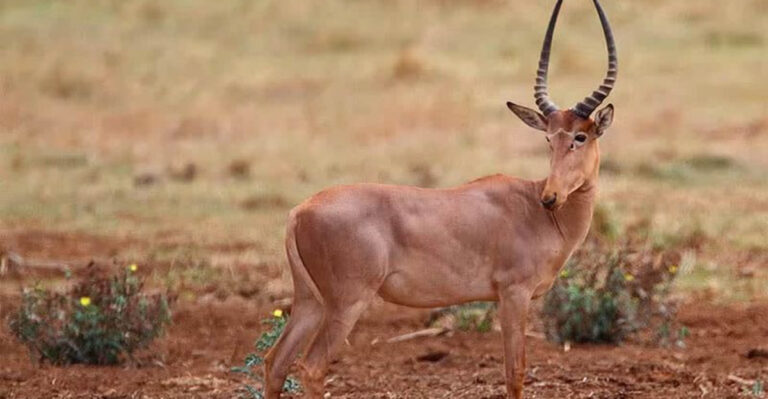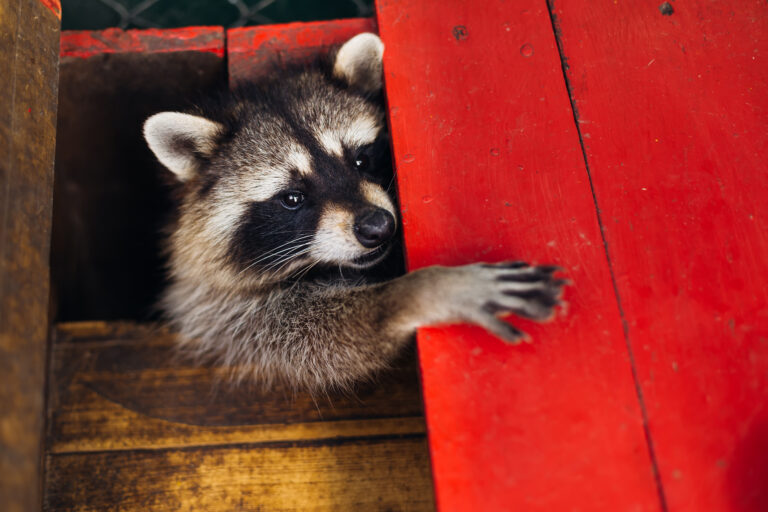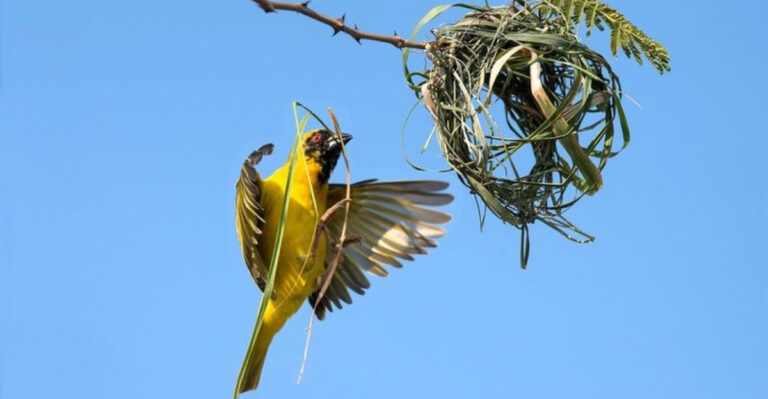13 Proven Hummingbird Photography Tips
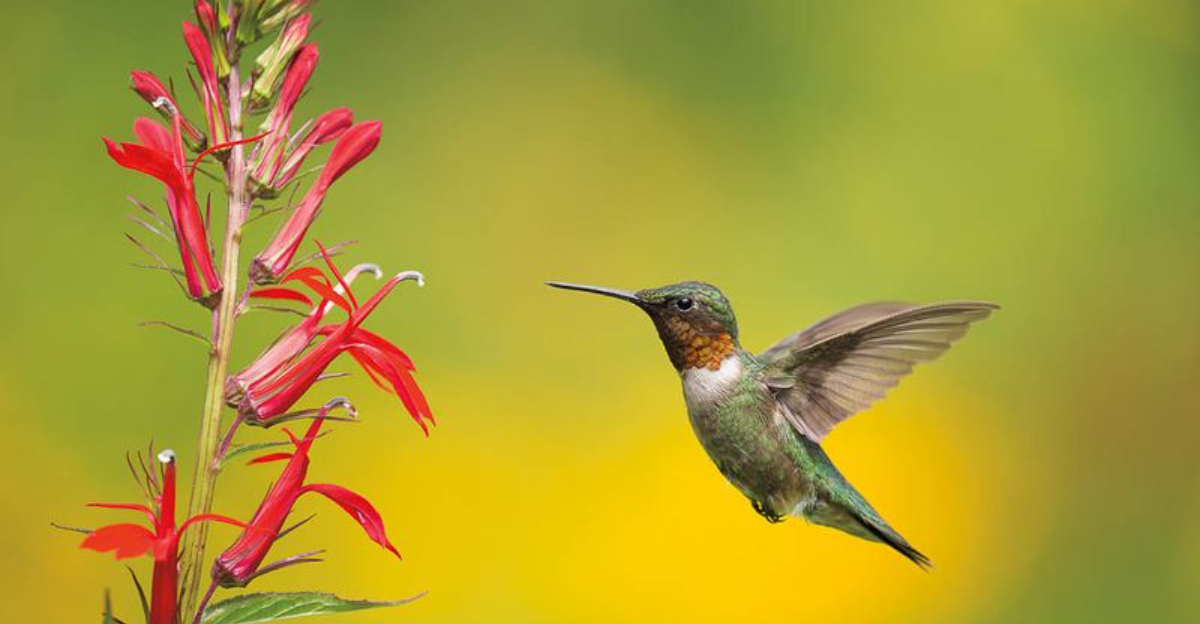
Freezing the lightning-fast wings of a hummingbird in a photo feels like capturing magic. These tiny aerial acrobats move so quickly that getting clear, stunning images requires special techniques and patience.
Whether you’re a beginner or seasoned photographer, these proven tips will help you capture the iridescent beauty of these remarkable birds.
1. Set Up Near Natural Feeders
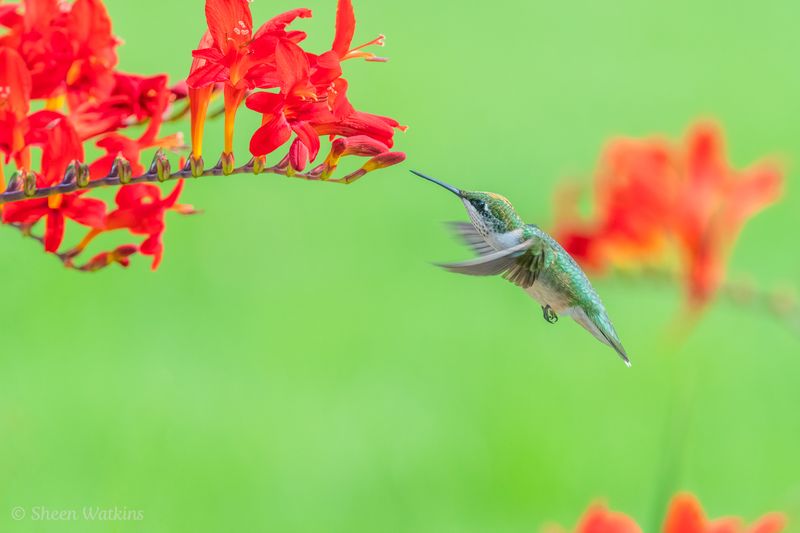
Scout locations where hummingbirds naturally gather before setting up your equipment. Natural feeding spots create more authentic images than artificial setups.
Hummingbirds are creatures of habit, returning to the same flowering patches daily. This predictability makes planning your photo session much easier.
2. Master High Shutter Speeds
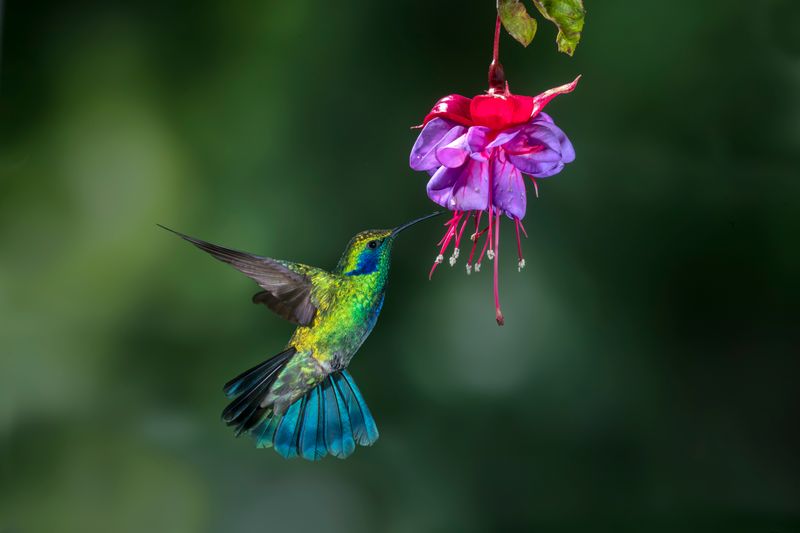
Tiny wings beating up to 80 times per second demand extremely fast shutter speeds. Aim for at least 1/2000 second to freeze those wings mid-flutter.
In lower light, you might need to bump up your ISO rather than compromise on shutter speed. Modern cameras handle higher ISOs surprisingly well.
3. Create Custom Backgrounds

Ever wondered why pro hummingbird photos look so clean? Photographers often place solid-colored fabric sheets behind feeding areas to eliminate distractions.
Green or black backgrounds make the birds’ colors pop dramatically. Position these backdrops far enough away to avoid looking artificial in your final image.
4. Know Hummingbirds’ Habits
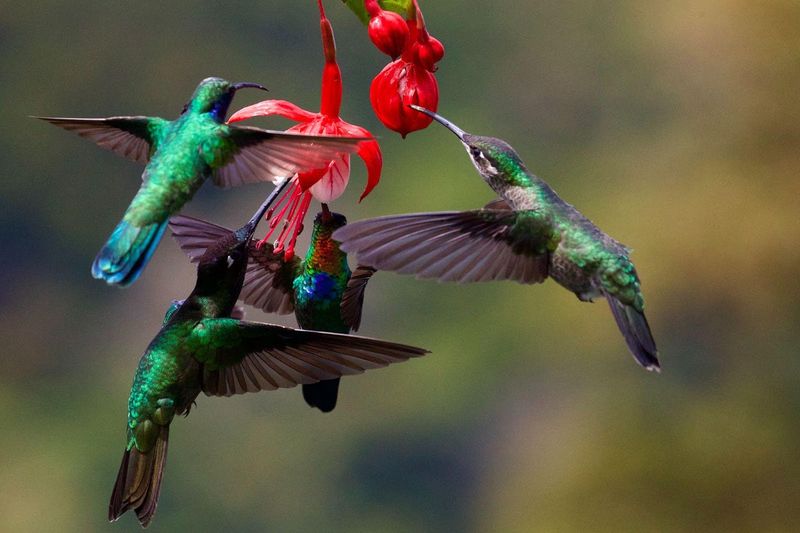
Hummingbirds are highly territorial and often defend their feeding spots vigorously. They typically visit flowers and feeders in the early morning and late afternoon when their energy needs are highest.
These birds have excellent memories, remembering the locations of food sources and even the timing of when to return. Understanding their habits helps create a more inviting environment for them to visit regularly.
5. Perfect Your Focusing Technique
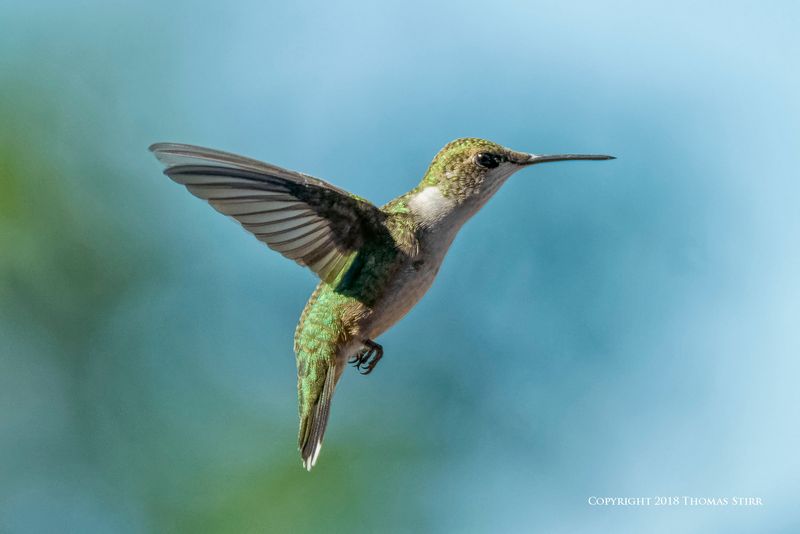
Forget automatic settings! Pre-focus on the spot where hummingbirds hover most frequently, then switch to manual focus to avoid frustrating focus-hunting.
Back-button focusing techniques work wonders for these quick subjects. This separates focus activation from your shutter button, giving you more control over capturing the perfect moment.
6. Make Your Own Nectar

Skip store-bought mixes with artificial dyes! Mix one part white sugar with four parts water for perfect homemade nectar that’s healthier for the birds.
Boil the mixture briefly to prevent fermentation, then cool completely before filling feeders. Fresh nectar attracts more birds and needs changing every 2-3 days in warm weather.
7. Plant Lots Of Flowers
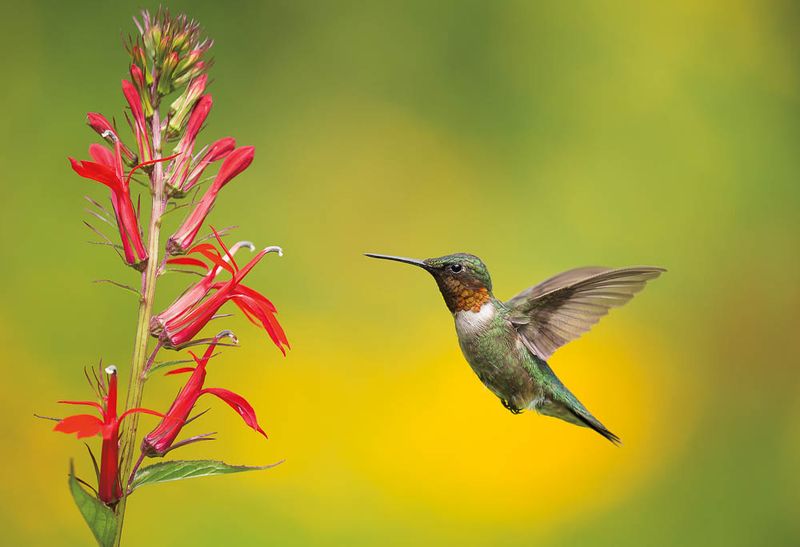
Planting a variety of nectar-rich flowers will attract more hummingbirds to your garden. Choose brightly colored blooms, especially red, orange, and pink, as these colors draw hummingbirds in.
Native plants are particularly beneficial, as they are well-suited to the local environment and provide natural food sources. Ensure a continuous bloom throughout the season to offer a steady food supply for these tiny birds.
8. Time Your Sessions Strategically
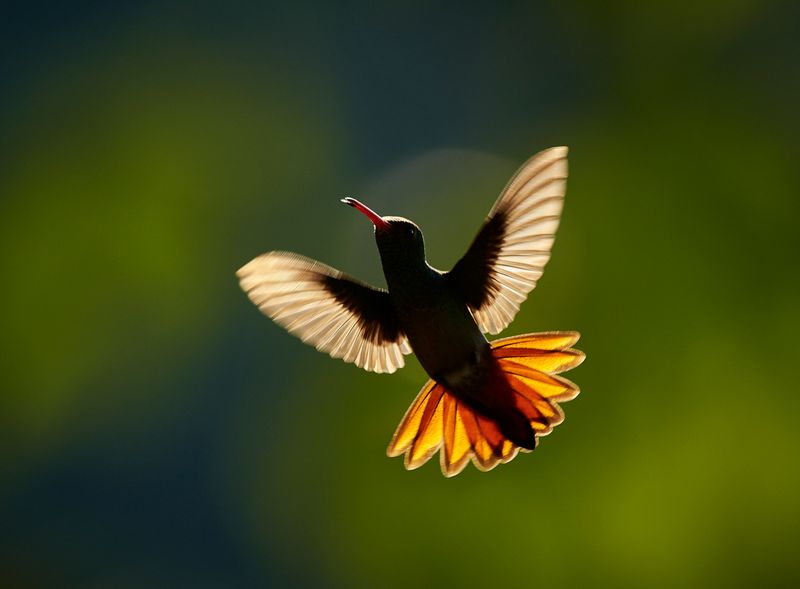
Morning magic happens within two hours after sunrise when hummingbirds feed most actively. They’re replenishing energy after nighttime torpor, making them less concerned about your presence.
Another golden window opens about an hour before sunset. During these times, natural light offers a gorgeous warm glow that flatters their iridescent plumage.
9. Create A Multi-Flower Setup
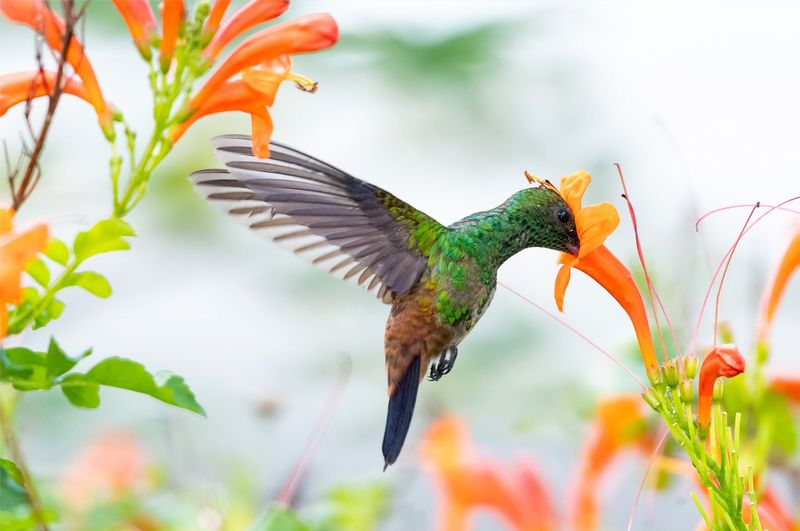
Want action shots beyond feeders? Plant hummingbird favorites like salvia, bee balm, and trumpet vine in a cluster. This natural buffet creates multiple photo opportunities as birds zip between blooms.
Bonus tip: red flowers typically attract the most attention. Position these strategically where lighting conditions are optimal for photography.
10. Dress For Stealth Success
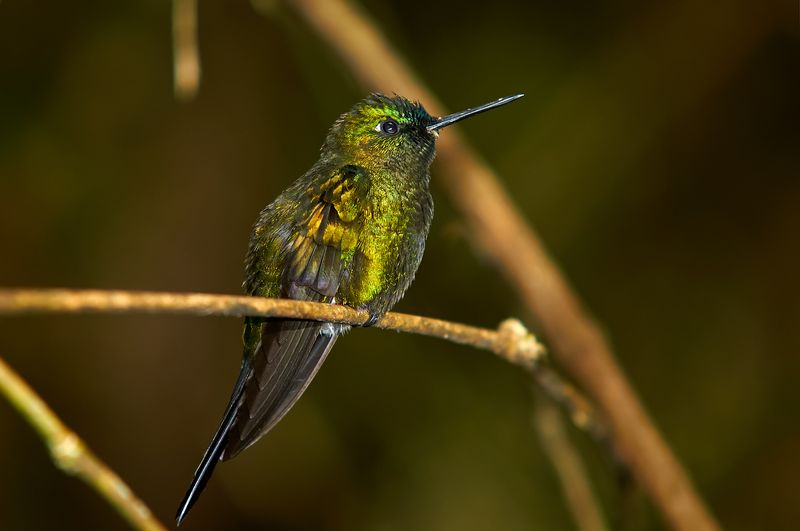
Bright colors might attract hummingbirds to feeders, but they’ll spook these birds when you’re behind the camera. Wear muted earth tones that blend with your surroundings.
Movement startles them more than your presence. Once positioned, minimize fidgeting and sudden movements. Patient photographers who become “part of the landscape” get the best shots.
11. Capture Behavior, Not Just Beauty
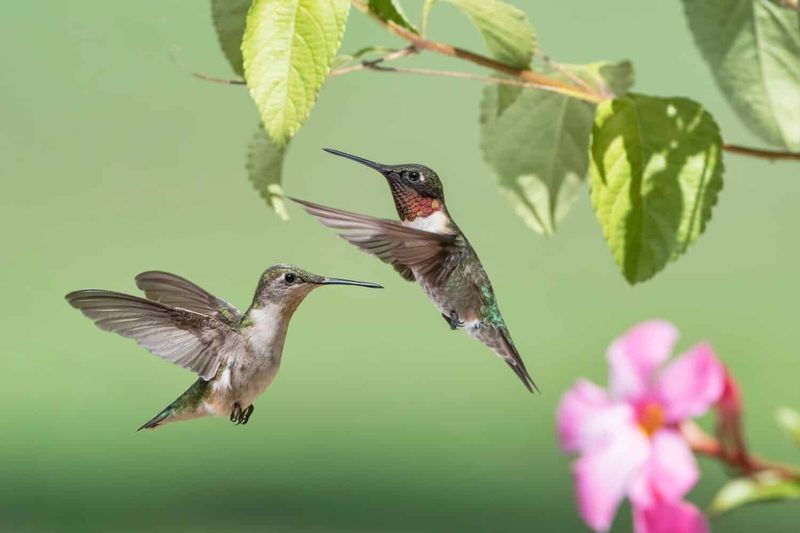
Beyond static portraits, aim for storytelling images. Male territorial displays, courtship dives, and mid-air confrontations showcase their fascinating behaviors.
Female hummingbirds building tiny nests or feeding babies create heartwarming narrative images. Research species-specific behaviors to anticipate these special photographic moments.
12. Master Continuous Shooting Mode
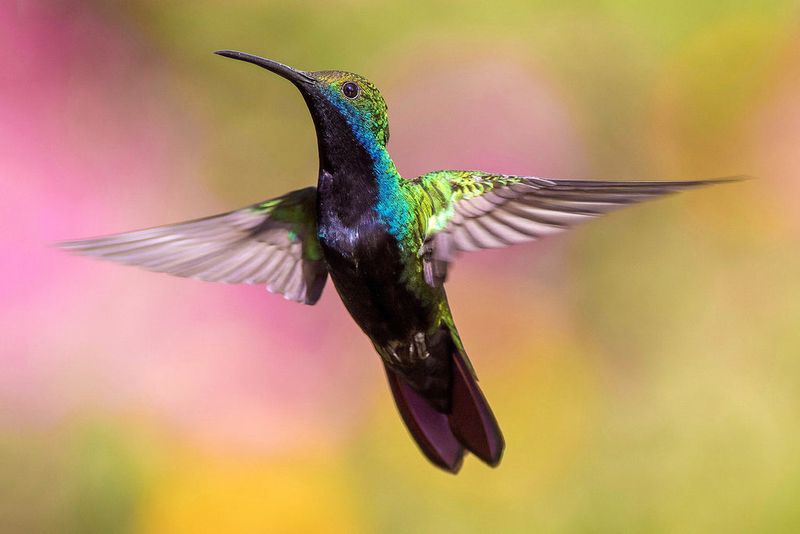
Burst mode isn’t just useful – it’s essential! Even experienced photographers can’t predict the split-second when a hummingbird will strike the perfect pose.
Memory cards are cheap compared to missed opportunities. Shoot in RAW format with your camera’s fastest continuous mode to capture rapid wing positions and fleeting moments of perfect light.
13. Post-Process With A Light Touch

Resist over-editing these natural jewels! Subtle adjustments to contrast and sharpness enhance details without creating an artificial look.
Focus on cleaning up backgrounds and removing distractions like feeder parts. The goal is showcasing the bird’s natural beauty, not creating digital fantasy. Let their true iridescence shine through with minimal manipulation.


